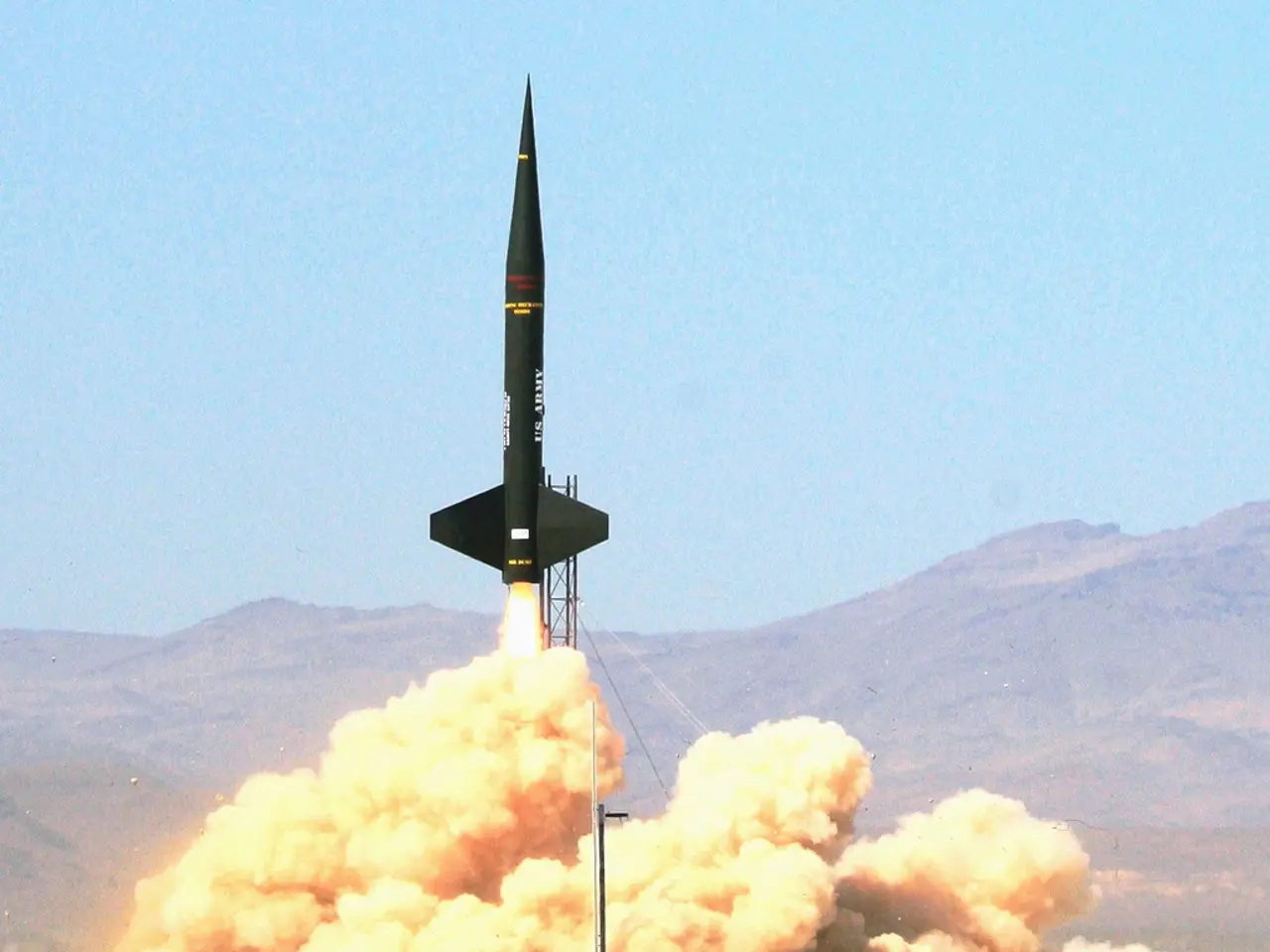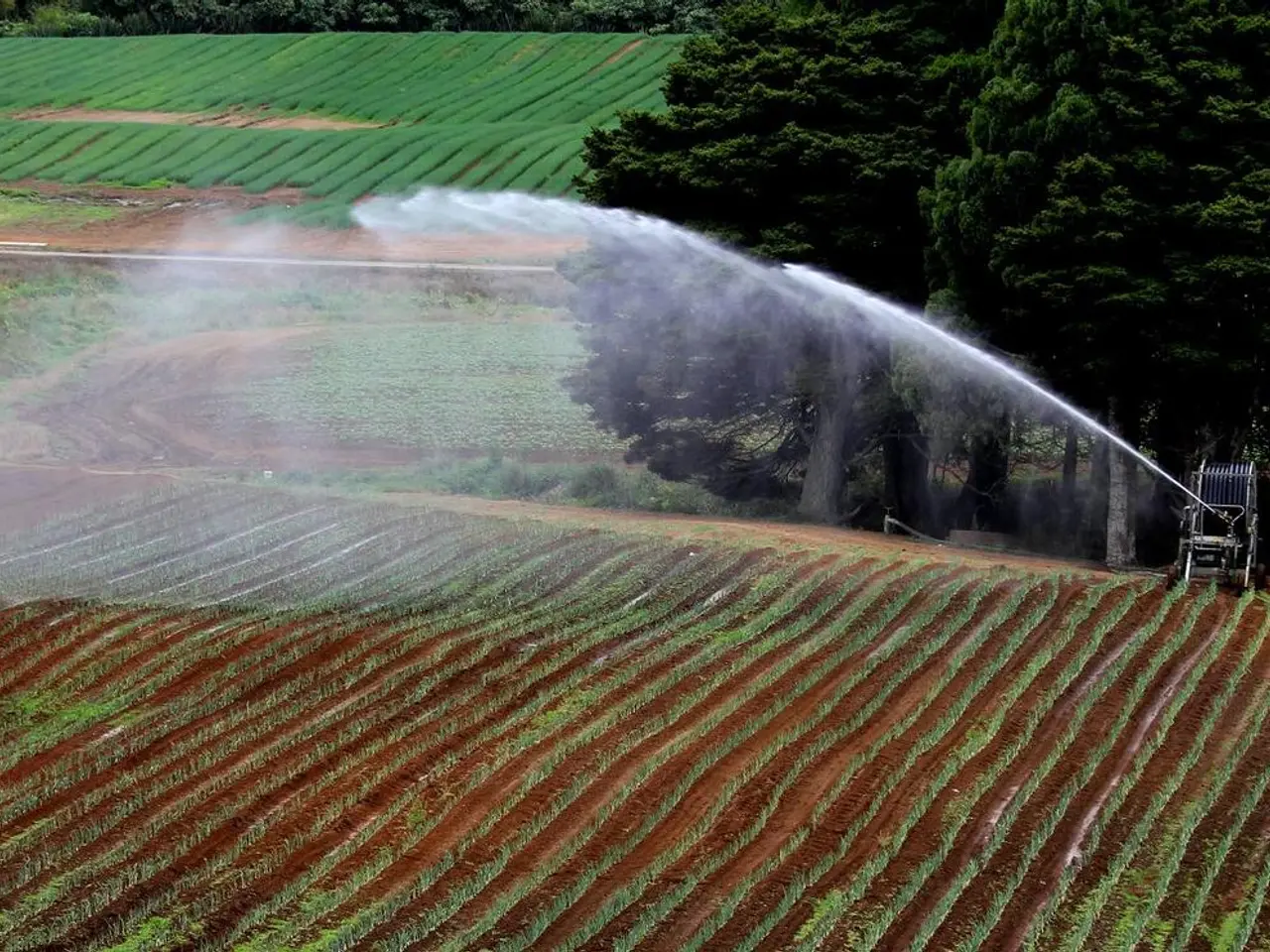Ukrainian drones encounter crash within the perimeters of "VNIIR" in Chuvashia province
In the eastern part of the Voronezh region, a house and a car were damaged due to debris from downed drones. Moreover, a low-pressure gas pipeline was also affected, leaving 22 subscribers temporarily without gas. These incidents are part of an ongoing series of drone attacks targeting critical infrastructure deep inside Russian territory [1][2][3].
Overnight, air defense systems intercepted and shot down a total of 49 drones in seven regions of Russia. The regions with the most drones shot down were Kursk and Nizhny Novgorod, with 13 each. In the Oryol region, nine drones were destroyed without any reported damage or injuries [1][2]. The governor of the Oryol region reported the destruction of these drones, while the governor of the Nizhny Novgorod region reported an attack in "several" districts, with one instance of drone debris falling on a residential territory, but no preliminary reports of injuries [1].
Two Ukrainian drones fell on the territory of AO "VNIIR" in Chuvashia this morning, causing the suspension of work to ensure employee safety. The All-Russian Scientific Research Institute of Relay Engineering with Experimental Production ("VNIIR") is a leading Russian manufacturer of relay protection and automation systems for substations, as well as low, medium, and high voltage electrical equipment [6].
In addition to the Voronezh and Oryol regions, drones also caused damage in the Bryansk and Chuvash regions, with no casualties or injuries reported [1][2]. Authorities in Kaluga and Tula regions have started fining journalists and social media users for posting photos and videos of drone strike aftermath, according to Kommersant [3].
The consequences of these drone attacks extend beyond physical damage. They have caused disruptions to transportation and logistics, notably delays in train schedules due to damage at Krasnodar and Rostov railway infrastructure, fires at railway stations in the Volgograd region, and temporary flight restrictions at airports including Sochi [1][3]. Industrial impact includes damage and temporary suspension of operations at key facilities like the Azot chemical plant and Afipskiy oil refinery [2][5].
The psychological impact on the Russian population is also significant, with increasing complaints reported publicly about explosions and the sense that internal control is weakening [2]. These drone attacks and the resulting falls and debris create tangible localized damage and logistical disruptions while contributing to a broader strain on Russia’s military-industrial and transport infrastructure [1][2][3][5].
Emergency services are currently working at the site of the house and car damage in Voronezh region, and a forest fire caused by drone fragments in the same region has since been extinguished. Twelve regions across the country have introduced administrative penalties for publishing such materials, though for most, the norm remains "dormant" [1].
[1] https://tass.ru/obschestvo/16944447 [2] https://www.kommersant.ru/doc/4897315 [3] https://www.rbc.ru/news/voyenka/63216a1f9a794791801398f4 [4] https://www.reuters.com/world/europe/ukraine-says-launched-drone-strike-russian-occupied-crimea-2022-10-14/ [5] https://www.reuters.com/world/europe/russia-says-ukraine-launched-series-drone-attacks-deep-inside-russia-2022-10-14/ [6] https://en.wikipedia.org/wiki/All-Russian_Scientific_Research_Institute_of_Relay_Engineering_with_Experimental_Production
- The new wave of drone attacks, which has caused damage in multiple regions such as Voronezh, Bryansk, Chuvashia, and others, has led to a disruption in politics and general news, with potential impacts on war-and-conflicts discussions.
- In the aftermath of the drone attacks, damage to critical infrastructure like the Azot chemical plant and the disruption of transportation and logistics systems have raised concerns about long-term consequences in politics and general news, particularly as tensions between Ukraine and Russia continue.








